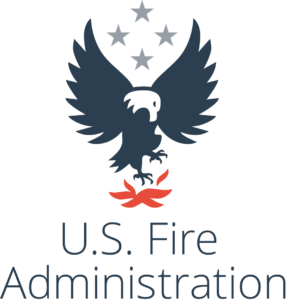Fire investigation is defined by the Fire Investigation Community as: “The practice of examining sites of fires to determine their causes.” There are essentially four different types of fires as described by Robert Meier. The first is natural, this type of fire happens due to natural causes, such as lightning. The second type is accidental, this type of fire occurs when a fire was not meant to be set. An example of this would be a log rolling out of a fireplace. The third is incendiary fire. This type of fire is intentionally set to cause harm. The last type of fire is undetermined, which means that the cause is unknown.
In fire investigation the first responder is very important. The Fire Investigation Series of Coffee Break Training, created by the US Fire Administration (USFA) says that, “First responders are responsible for protecting lives and property from fire and other potential harm.” It also says that first responders are in the best position to document the scene because they have the opportunity to see the scene right after the fire or the explosion occurs. What the first responder documents can end up being crucial to the investigation and trial. It is important that first responders for fire investigations treat the scene like it’s a crime scene until the fire investigator says it’s not. There are four tasks that a first responder can perform to help with the investigation. The first task is observation. Observation requires the first responder to take note of everything at the scene. Some observations that a first responder should take note of include:
• Conditions in the area/room of origin
• Victims found
• Witness behaviors
• Rescuer actions
The second task is recognition. Recognition requires the first responder to be able to recognize what at the scene may be useful in the investigation as evidence. The third task is to preserve. Preservation requires the responder to use techniques such as overhaul to minimize damage of the scene. Overhauling is described by Fire Engineering as, opening walls, ceilings, voids, and partitions to check for fire extension. To minimize damage the USFA recommends that first responders do the following:
• Avoiding excessive overhaul that may damage evidence or obscure fire patterns.
• Refraining from moving switches or plugs located on utilities and appliances.
The fourth task is notification. Notification requires a first responder to report to the incident commander and investigators anything that they observed and to ask questions if anything is unclear or doesn’t seem to make sense.
After the first responders secure the scene the fire investigators can begin to investigate the scene. Richard Meier, who is a fire investigator with John A. Kennedy and Associates in Sarasota, Florida was interviewed by National Geographic and explains how fire investigators determine the cause of the fire. Meier says that recently fire investigators use the scientific method to help them. Before the scientific method it was based off of old wives tales. Meier says the first thing to look for as a fire investigator is the origin; this is where the fire started. The origin is broken up in two different ways. The area of origin, which can be a large space, for example a room of a house, and the point of origin which is the smallest space you can identify and can be as small as a thimble or as large as a room. To find the origin, Meier says to follow patterns. For example, on the walls of a house, v-shape patterns show the direction of the fire; from there you can work backwards. After the area of origin and the point of origin are identified, the next identification to be made would be what the ignition source was. An ignition source can be a campfire or a glass bottle that when in the sun acts like a magnifying glass. After the ignition source is found a fire investigator must test all fuels that seem reasonable for that particular ignition source. For example, if in a heavily wooded area, pine needles could be a fuel for the glass bottle that acts like a magnifying glass when in the sun. From here a lot of the work is left up to law enforcement and their investigators to determine if the fire was set intentionally. The final thing that a fire investigator can do is collect samples from the scene if it is suspected that chemicals were used.
Back to Crime Library
|
|
|

